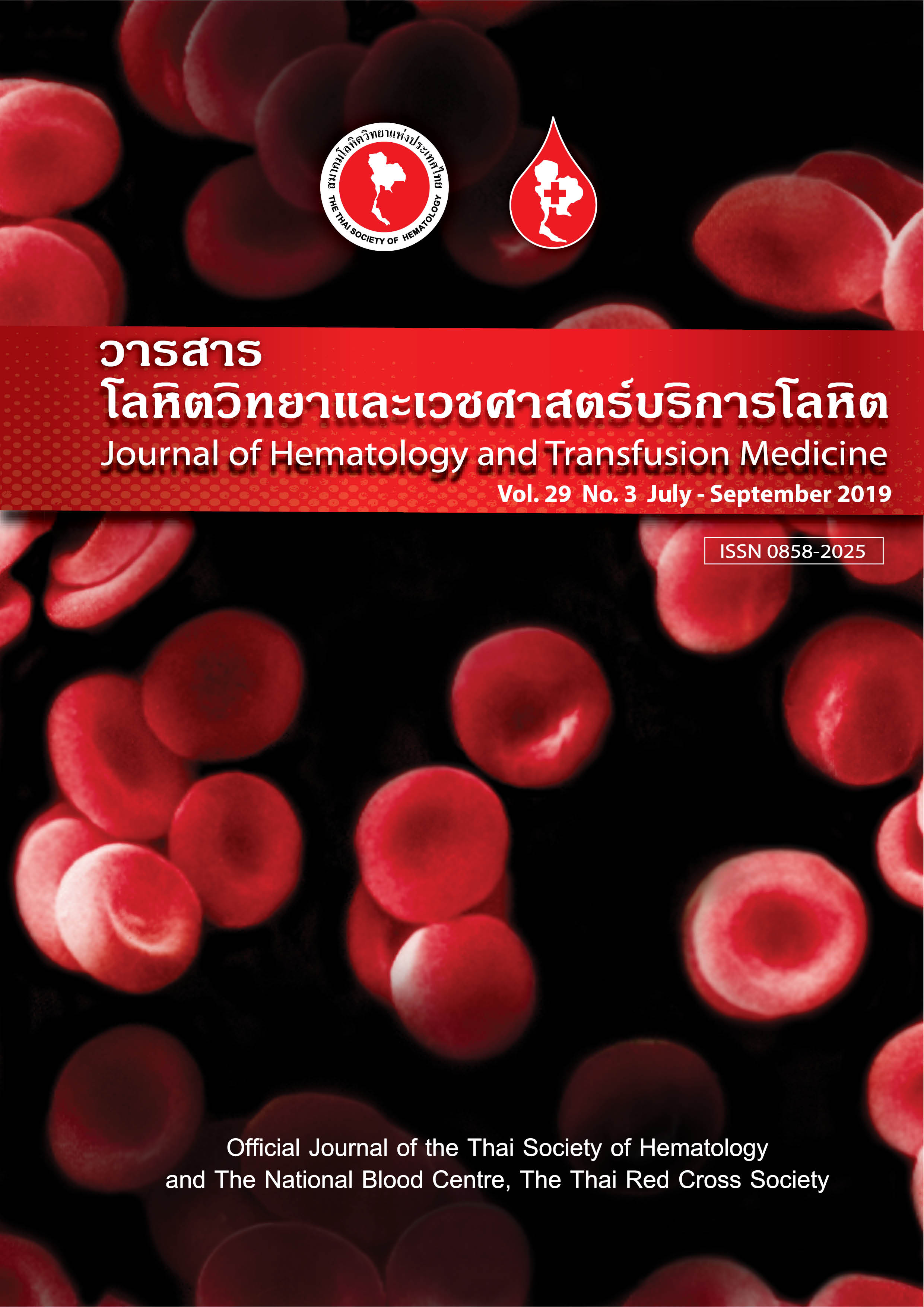Bleeding risk of warfarin therapy among cirrhotic patients
Keywords:
Anticoagulant, warfarin, cirrhosis, Thrombocytopenia, bleedingAbstract
Background: Although cirrhosis is often associated with thrombocytopenia and coagulopathy, it provides no protection from thromboembolism. Some of these patients require anticoagulants that may cause more complications. A study in this particular group would provide helpful guidelines to make clinical decisions to prescribe appropriate medication.
Objective: To compare the bleeding side effects and thromboembolism during anticoagulant use in patients with liver cirrhosis and the control group.
Methods: This comprised a retrospective cohort study reviewing the medical records of warfarin use among patients with cirrhosis compared with age-matched patients without cirrhosis.
Results: The study enrolled 102 participants, 32 patients with cirrhosis and 70 controls. In the cirrhotic group, 78.1%, 18.8%, and 3.1% revealed Child Pugh scores A, B, and C, respectively. The high bleeding risk (HAS-BLED score ≥3) did not differ between 2 groups. In the cirrhotic group, the number of major bleeding, nonmajor bleeding, and thromboembolism cases totaled 34.4%, 31.3%, and 9.4% respectively, and those of the control group were 11.4%, 22.9%, and 10.0%, respectively. The odds ratios were 4.06 (95% Confidence interval [CI] 1.44-11.44, p = 0.008) for major bleeding, 1.53 (95%CI 0.60-3.90, p = 0.369) for non major bleeding and 0.93 (95%CI 0.22-3.86, p = 0.922) for thromboembolism. The significant predictors of major bleeding were liver cirrhosis and alcohol consumption. Multivariate analysis revealed cirrhosis was still associated with major bleeding with the odds ratio of 3.04 (95%CI 1.01-9.14, p = 0.047).
Summary This study found that warfarin use among patients with cirrhosis was associated with 3 times more major bleeding cases compared with the control.
Downloads
References
2. Northup PG, McMahon MM, Ruhl AP, Altschuler SE, Volk-Bednarz A, Caldwell SH, et al. Coagulopathy does not fully protect hospitalized cirrhosis patients from peripheral venous thromboembolism. Am J Gastroenterol. 2006;101:1524-8.
3. Gulley D, Teal E, Suvannasankha A, Chalasani N, Liangpunsakul S. Deep vein thrombosis and pulmonary embolism in cirrhosis patients. Dig Dis Sci. 2008;53:3012-7.
4. Ali M, Ananthakrishnan AN, McGinley EL, Saeian K. Deep vein thrombosis and pulmonary embolism in hospitalized patients with cirrhosis: a nationwide analysis. Dig Dis Sci. 2011;56:2152-9.
5. Dabbagh O, Oza A, Prakash S, Sunna R, Saettele TM. Coagulopathy does not protect against venous thromboembolism in hospitalized patients with chronic liver disease. Chest. 2010;137:1145-9.
6. Kuo L, Chao TF, Liu CJ, Lin YJ, Chang SL, Lo LW, et al. Liver cirrhosis in patients with atrial fibrillation: would oral anticoagulation have a net clinical benefit for stroke prevention?. J Am Heart Assoc. 2017;6:e005307.
7. Kearon C, Akl EA, Ornelas J, Blaivas A, Jimenez D, Bounameaux H, et al. Antithrombotic Therapy for VTE Disease CHEST Guideline and Expert Panel Report. Chest. 2016;149:315-52.
8. January CT, Wann LS, Alpert JS, Calkins H, Cigarroa JE, Cleveland JC Jr, et al. 2014 AHA/ACC/HRS guideline for the management of patients with atrial fibrillation: a report of the American College of Cardiology/American Heart Association Task Force on practice guidelines and the Heart Rhythm Society. Circulation. 2014;130:e199-267.
9. Lee SJ, Uhm JS, Kim JY, Pak HN, Lee MH, Joung B. The safety and efficacy of vitamin K antagonist in patients with atrial fibrillation and liver cirrhosis. Int J Cardiol. 2015;180:185-91.
10. Choi J, Kim J, Shim JH, Kim M, Nam GB. Risks versus benefits of anticoagulation for atrial fibrillation in cirrhotic patients. J Cardiovasc Pharmacol. 2017;70:255-62.
11. Cerini F, Gonzalez JM, Torres F, Puente Á, Casas M, Vinaixa C, et al. Impact of anticoagulation on upper gastrointestinal bleeding in cirrhosis. A retrospective multicenter study. Hepatology. 2015;62:575-83.
12. Intagliata NM, Henry ZH, Shah N, Lisman T, Caldwell SH, Northup PG. Prophylactic anticoagulation for venous thromboembolism in hospitalized cirrhosis patients is not associated with high rates of gastrointestinal bleeding. Liver Int. 2014;34:26-32.
13. Reichert JA, Hlavinka PF, Stolzfus JC. Risk of hemorrhage in patients with chronic liver disease and coagulopathy receiving pharmacologic venous thromboembolism prophylaxis. Pharmacotherapy. 2014;34:1043-9.
14. Shatzel J, Dulai PS, Harbin D, Cheung H, Reid TN, Kim J, et al. Safety and efficacy of pharmacological thromboprophylaxis for hospitalized patients with cirrhosis: a single-center retrospective cohort study. J Thromb Haemost. 2015;13:1245-53.
15. Gómez Cuervo C, Bisbal Pardo O, Pérez-Jacoiste Asín MA. Efficacy and safety of the use of heparin as thromboprophylaxis in patients with liver cirrhosis: A systematic review and meta-analysis. Thromb Res. 2013;132:414-9.
16. Caldeira D, Cruz I, Morgado G, Stuart B, Gomes AC, Martins C, et al. Is the time in therapeutic range using the ratio of tests equivalent to the Rosendaal method. Blood Coagul Fibrinolysis. 2015;26:972-6.
17. Schulman S, Kearon C. Subcommittee on Control of Anticoagulation of the Scientific and Standardization Committee of the International Society on Thrombosis and Haemostasis. Definition of major bleeding in clinical investigations of antihemostatic medicinal products in non-surgical patients. J Thromb Haemost. 2005;3:692-4.
18. Kaatz S, Ahmad D, Spyropoulos AC, Schulman S, Subcommittee on Control of Anticoagulation. Definition of clinically relevant non-major bleeding in studies of anticoagulants in atrial fibrillation and venous thromboembolic disease in non-surgical patients: communication from the SSC of the ISTH. J Thromb Haemost. 2015;13:2119-26.
19. Zhu W, He W, Guo L, Wang X, Hong K. The HAS-BLED score for predicting major bleeding risk in patients with atrial fibrillation: A systematic review and meta-analysis. Clin Cardiol. 2015;38:555-61.



